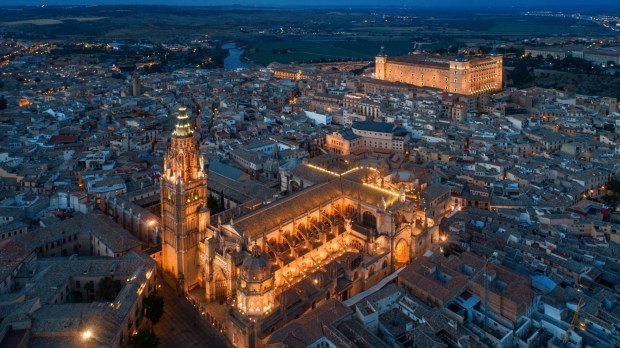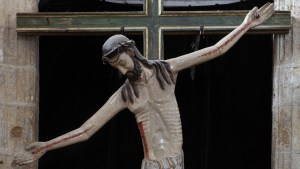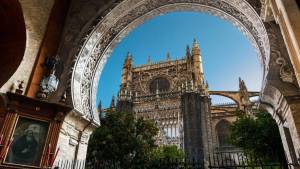The Cathedral of Toledo (known as Catedral Primada de Santa María de Toledo in the original Spanish) is an eloquent example of the many intricacies that make up Spanish history and culture. Its origins go back to the 13th century, when construction began in 1226, during the reign of Ferdinand III of Castile (also known as Fernando El Santo, as he was canonized by Pope Clement X in 1671). It was built atop the site of a former mosque, symbolizing the transformation of Spain from Islamic rule to Christian governance during the Reconquista.
This Gothic masterpiece reflects the influence of various architectural styles, notably the French and German Gothic traditions, which are evident in its intricate rib vaults and soaring spires. The construction of the cathedral continued over several centuries and was finished in 1493 – one year after Columbus’ arrival in the Americas. It is widely considered the opus magnum of Iberian Gothic architecture.
One of the most remarkable features is the Puerta del Perdón (the Door of Forgiveness), an entrance adorned with typically intricate sculptures and Gothic tracery – its name coming from the days when indulgences were granted to penitents who entered through it. Inside, the cathedral houses an extraordinary collection of religious art, including works by renowned Spanish artists such as El Greco and Diego Velázquez.
800 years of history and service
Unwritten popular tradition claims that an early church was already there, centuries before the cathedral (or the mosque) was built. Some say the church was built in the days of Eugenius I, who was bishop of Toledo in the early 7th century – he even presided over the Fifth Council of Toledo. But inscriptions in the cathedral’s walls attest that a church had already been consecrated even before Eugenius, in the year 587.
The Dean of the Cathedral of Toledo, Juan Pedro Sánchez, told COPE that, to mark the 800th anniversary of the foundation of the current cathedral, plenty of pending restoration works will be finished. Also, the current archbishop of Toledo, Francisco Cerro, listed some of the events that will take place during the final quarter of 2023 and all throughout 2024, including the inauguration of the Hall of Saints, a series of night visits to the Cathedral, and a rich musical program called the “Lira de Toledo.”
“We are very excited about our 800th anniversary because it can do a lot of good,” the archbishop told COPE. “We just published a special edition of the cathedral’s magazine, as an introduction to the many beauties it preserves.”



